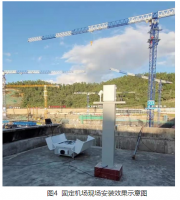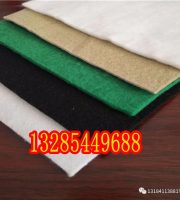According to the project affiliation agreement between the two parties, CSCEC did not owe di Min the project funds for the projects involved.
2.
On November 25, 2017, CSCEC and di min signed a supplementary agreement on the confirmation of settlement and reconciliation, which stated that the reason why Di min filed the case was that Jinhua company defaulted on the payment of the project funds.
The Supreme Court held in the retrial that Zhenjia company’s request to participate in the litigation as a third party in the first and second instance of this case was based on the agreement signed between Zhenjia company and the project department.
Due to the affiliated relationship between di min company and CSCEC, according to Item 2 of Article 1 of the legal interpretation of construction project dispute case: if the construction contract of construction project has one of the following circumstances, it shall be deemed invalid according to item 5 of Article 52 of the contract law: (2) the unqualified actual constructor borrows the name of a qualified construction enterprise; Paragraph 2 of Article 26 of the construction law of the people’s Republic of China stipulates that “construction enterprises are prohibited from exceeding the business scope permitted by the qualification level of the enterprise or contracting projects in the name of other construction enterprises in any form.
In order to claim its rights, Zhenjia company has filed another lawsuit, and the court of first instance does not allow it to participate in the lawsuit as a third party, which will not lead to the situation that its rights cannot be remedied.
Moreover, in the second instance, both Di min company and Jinhua company recognized the affiliated relationship between CSCEC and di min company.
The focus of dispute in this case is: first, is the nature of the legal relationship between CSCEC and di min company affiliated or project subcontracting or subcontracting; 2、 Whether and how should Jinhua company and China Construction Company bear the responsibility of paying project funds to di min company.
On the second focus of controversy.
On November 22, 2017, CSCEC and di min signed a settlement and reconciliation confirmation (Jinhua interior decoration) to determine the total settlement price of the decoration projects involved in the case.
5.
3.
4.
Therefore, it is correct that the court of first instance does not add a third person to participate in the lawsuit.
According to Article 26 of the legal interpretation of construction project dispute, di min company, the actual constructor, has the right to claim the project payment from Jinhua company, the employer, and Jinhua company shall bear the payment responsibility to di min company within the scope of the project payment owed.
About the first focus of controversy.
Construction enterprises are prohibited from allowing other units or individuals to use the qualification certificate and business license of the enterprise in any form to contract projects in the name of the enterprise.” Item 5 of Article 52 of the contract law of the people’s Republic of China “violates the mandatory provisions of laws and administrative regulations.” The construction contract for the facade decoration project of century Jinhua Pearl River Times Square Shopping Center, the construction contract for the decoration project of century Jinhua Pearl River Times Square Shopping Center, and the decoration (subcontracting) contract of century Jinhua Pearl River Times Square Shopping Center signed by CSCEC and di min company are invalid contracts due to violation of mandatory provisions of law..
On April 25, 2012, Jinhua company and China Construction Corporation signed the construction contract for the facade decoration project of century Jinhua Pearl River Times Square Shopping Center, contracting out the facade decoration project of century Jinhua Pearl River Times Square Shopping Center to China Construction Corporation.
2.
The project has been accepted and delivered for use.
On November 22, 2017, both parties signed the reconciliation confirmation.
3.
On the same day, CSCEC signed the decoration (subcontracting) contract of century Jinhua Pearl River Times Square shopping center with di min company to subcontract the decoration project of century Jinhua Pearl River Times Square Shopping Center to di min company.
According to Article 2 of the legal interpretation of construction project dispute case, “the construction contract of construction project is invalid, but the construction project passes the completion acceptance, and the Contractor’s request to pay the project price according to the contract shall be supported”.
The situation of Toyo company and Zhenjia company is basically the same.
Case summary 1.
Therefore, the original judgment found that the affiliated relationship between CSCEC and di min company was correct, which was confirmed by the court.
On May 2, 2012, Jinhua company and CSCEC signed the construction contract for the decoration project of century Jinhua Pearl River Times Square Shopping Center, contracting out the decoration project of century Jinhua Pearl River Times Square Shopping Center to CSCEC.
Due to the affiliated relationship between di min company and China Construction Corporation, for Jinhua company and China Construction Corporation, di min company is the actual constructor of the project involved.
On July 4, 2017, Jinhua company and China Construction Company signed a project settlement letter on the project involved (interior decoration).
Jinhua company believes that di min company and CSCEC are the defense reasons for subcontracting relationship, which is inconsistent with the facts and cannot be established.
Although the contract involved is invalid, it is still in the actual constructor (affiliated person) There is a creditor’s right and debt relationship between the employer and the affiliated party to pay the project funds according to the contract.
Although the name of the decoration (subcontracting) contract of century Jinhua Pearl River Times Square Shopping Center signed by China Construction Corporation and di min company contains the word “subcontracting”, the affiliated relationship between di min company and China Construction Corporation is recognized in the situation statement issued by Di min company and the supplementary agreement of settlement reconciliation confirmation and settlement reconciliation Confirmation signed with China Construction Corporation.
The disputes between Zhenjia company and di min company can be settled separately according to law.
The project department is established by Di min company.
Di min agreed to waive its right to claim the unpaid project funds from China Construction Company during the trial and implementation of the case, In the exercise of substantive rights, di min company will directly claim the unpaid project payment from Jinhua company.
In the case of affiliated construction of practical problems, can the actual constructor (affiliated person) directly sue the employer? Referee opinion 1 If the evidence provided by the parties can prove that the relationship between the two parties is affiliated and recognized by both parties, the court can determine that it is affiliated.



